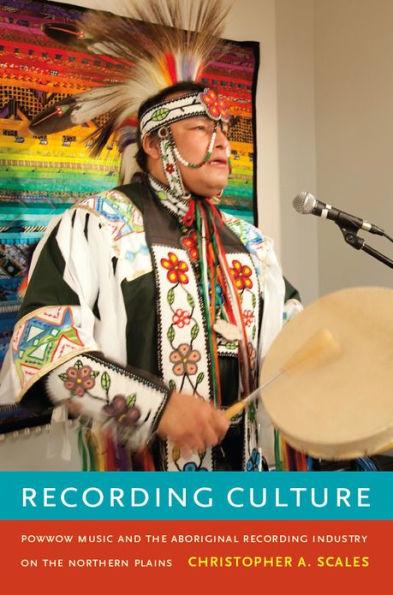Recording is central to the musical lives of contemporary powwow singers yet, until now, their aesthetic practices when recording have been virtually ignored in the study of Native American expressive cultures. Recording Culture is an exploration of the Aboriginal music industry and the powwow social world that supports it. For twelve years, Christopher A. Scales attended powwows—large intertribal gatherings of Native American singer-drummers, dancers, and spectators—across the northern Plains. For part of that time, he worked as a sound engineer for Arbor Records, a large Aboriginal music label based in Winnipeg, Canada. Drawing on his ethnographic research at powwow grounds and in recording studios, Scales examines the ways that powwow drum groups have utilized recording technology in the late twentieth and early twenty-first centuries, the unique aesthetic principles of recorded powwow music, and the relationships between drum groups and the Native music labels and recording studios. Turning to "competition powwows," popular weekend-long singing and dancing contests, Scales analyzes their role in shaping the repertoire and aesthetics of drum groups in and out of the recording studio. He argues that the rise of competition powwows has been critical to the development of the powwow recording industry. Recording Culture includes a CD featuring powwow music composed by Gabriel Desrosiers and performed by the Northern Wind Singers.
Recording is central to the musical lives of contemporary powwow singers yet, until now, their aesthetic practices when recording have been virtually ignored in the study of Native American expressive cultures. Recording Culture is an exploration of the Aboriginal music industry and the powwow social world that supports it. For twelve years, Christopher A. Scales attended powwows—large intertribal gatherings of Native American singer-drummers, dancers, and spectators—across the northern Plains. For part of that time, he worked as a sound engineer for Arbor Records, a large Aboriginal music label based in Winnipeg, Canada. Drawing on his ethnographic research at powwow grounds and in recording studios, Scales examines the ways that powwow drum groups have utilized recording technology in the late twentieth and early twenty-first centuries, the unique aesthetic principles of recorded powwow music, and the relationships between drum groups and the Native music labels and recording studios. Turning to "competition powwows," popular weekend-long singing and dancing contests, Scales analyzes their role in shaping the repertoire and aesthetics of drum groups in and out of the recording studio. He argues that the rise of competition powwows has been critical to the development of the powwow recording industry. Recording Culture includes a CD featuring powwow music composed by Gabriel Desrosiers and performed by the Northern Wind Singers.

Recording Culture: Powwow Music and the Aboriginal Recording Industry on the Northern Plains
368
Recording Culture: Powwow Music and the Aboriginal Recording Industry on the Northern Plains
368
Product Details
| ISBN-13: | 9780822395720 |
|---|---|
| Publisher: | Duke University Press |
| Publication date: | 11/12/2012 |
| Series: | Refiguring American music |
| Sold by: | Barnes & Noble |
| Format: | eBook |
| Pages: | 368 |
| File size: | 2 MB |
